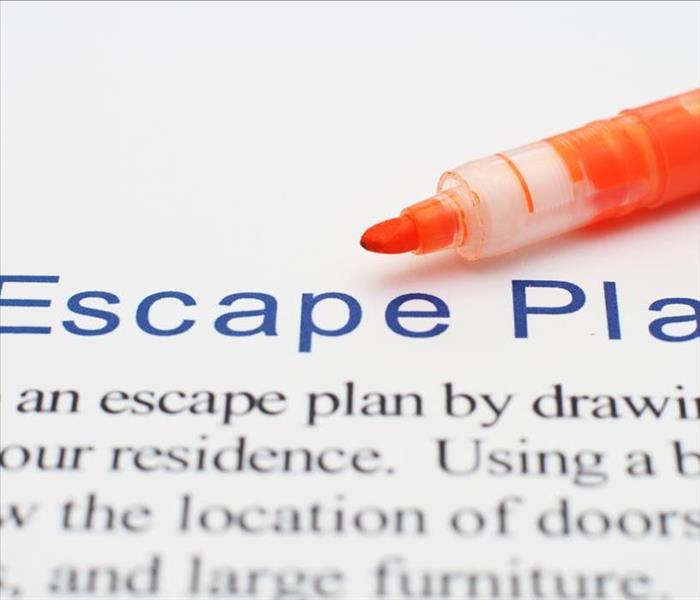Create a Fire Escape Plan for Your Family's Safety
2/24/2022 (Permalink)
Every second counts when it comes to getting your family safely out of a home fire. This means creating a fire escape plan that covers all the bases. Use the following tips for creating your own emergency escape plan and regularly practice evacuation with your children.
Five Tips for Effectively Using a Fire Escape Plan
Gather your family together while making the plan. Create a visual map of the home and then walk through your home, noting all the potential exits, including the windows. Make sure you mark two routes of escape from each room.
Don't forget to indicate the locations of fire alarms and extinguishers and then provide each family member with a copy of the map. Include tasks for family members, such as assisting younger siblings or older adults out of the home.
1. Keep Escape Points Accessible
Make sure that all exit points are free from obstruction. This may include providing access to exit points, such as windows. Remember that seconds count, so make it as easy as possible for children to reach and open windows during a fire. An emergency release device on the windows can ensure that no one outside can enter, but family members can still trigger the release when necessary.
2. Choose a Safe Meeting Place
Assign a meeting place outside of your home where family members will gather. Choose a location that is far enough away to be safe from the fire and close enough that each family member can get there quickly. If this is location is at a neighbor's home, be sure to reach out to that neighbor before practicing your escape plan. Teach your children to stay out of the home once they've evacuated; they should not return to for any reason. If a family member or pet is missing, alert the fire department.
3. Increase the Number of Fire and Smoke Detectors
Install plenty of smoke detectors in your home. There should be a detector/alarm in every bedroom, hallways outside of bedrooms, and on every level of the home. You should also install detectors in the kitchen and other rooms with potential fire hazards. Make sure you have a schedule for replacing batteries and detectors.
Talk with a professional about installing a connected fire detection system, so that all of the alarms respond as soon as one of them picks up signs of trouble
4. Close Bedroom Doors at Night
Teach children to sleep with their bedroom doors closed. This simple barrier slows the spread of heat, smoke, and flames into the bedroom. It also gives your children a little more time to safely evacuate.
Part of your fire escape plan should include details such as feeling the doorknob for heat and checking for smoke coming through the gaps around the door.
5. Schedule Fire Drills Often
Running through the fire escape plan regularly is a crucial part of surviving a house fire. After working through the plan several times during the day, run through it a few times at night. You may want to run through some drills when family members aren't expecting them. It is also worth noting that children may not wake during a fire alarm without some practice.
You can get more information about fire prevention and escape plans from your local fire department, a fire mitigation and remediation company in New Bern, NC, and your home insurance provider.





 24/7 Emergency Service
24/7 Emergency Service
